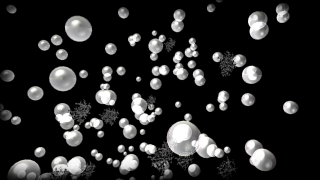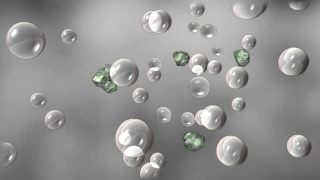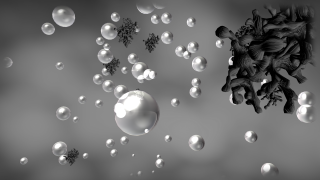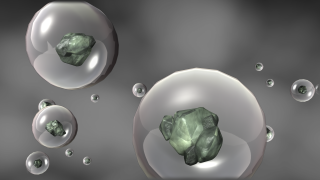Aerosols Impact Cloud Formation
|
Aerosols are complex particles; they occur in nature and can also be generated by human activity. One important new area of aerosol research involves how aerosols impact clouds. Without aerosols, clouds could not exist. Aerosol particles serve as condensation nuclei for water vapor in the atmosphere. Atmospheric water molecules are drawn to aerosol particles like magnets, forming water droplets and eventually creating a cloud. The introduction of a larger number of aerosols will modify cloud's natural properties, leading to an accumulation of water droplets that are smaller in size but greater in number. Clouds play an important role in regulating Earth's climate; aerosol-rich air masses generate clouds that are bigger, brighter, and longer lasting.
|
|

|
|
This animation shows how a cloud is formed on the particle-level. Water droplets and black soot carbon aerosols mix in the air. Water droplets cling to aerosol particles, creating a larger water droplet. The droplet becomes very large and 'pops' into smaller water droplets, each with an aerosol particle inside, thus creating a cloud.
Duration: 49.0 seconds
Available formats:
1280x720 (30 fps)
Frames
(Black Soot Carbon)
1280x720 (30 fps)
QT
147 MB
320x180
PNG
96 KB
160x80
PNG
27 KB
80x40
PNG
8 KB
How to play our movies
|
|

|
|
Animation of ocean salt acting as cloud condensation nuclei.
Duration: 50.0 seconds
Available formats:
1280x720 (30 fps)
Frames
(Sea Salt)
1280x720 (30 fps)
QT
113 MB
320x180
PNG
130 KB
160x80
PNG
44 KB
80x40
PNG
15 KB
How to play our movies
|
|

|
|
Close-up of black soot particle and water droplets.
Available formats:
4000 x 2250
TIFF
25 MB
320 x 180
PNG
199 KB
|
|

|
|
Close-up of water droplets condensing on ocean salt particles.
Available formats:
4000 x 2250
TIFF
25 MB
320 x 180
PNG
208 KB
|
|
|
Back to Top
|